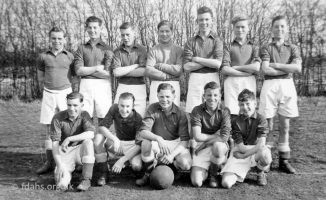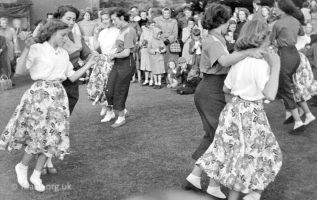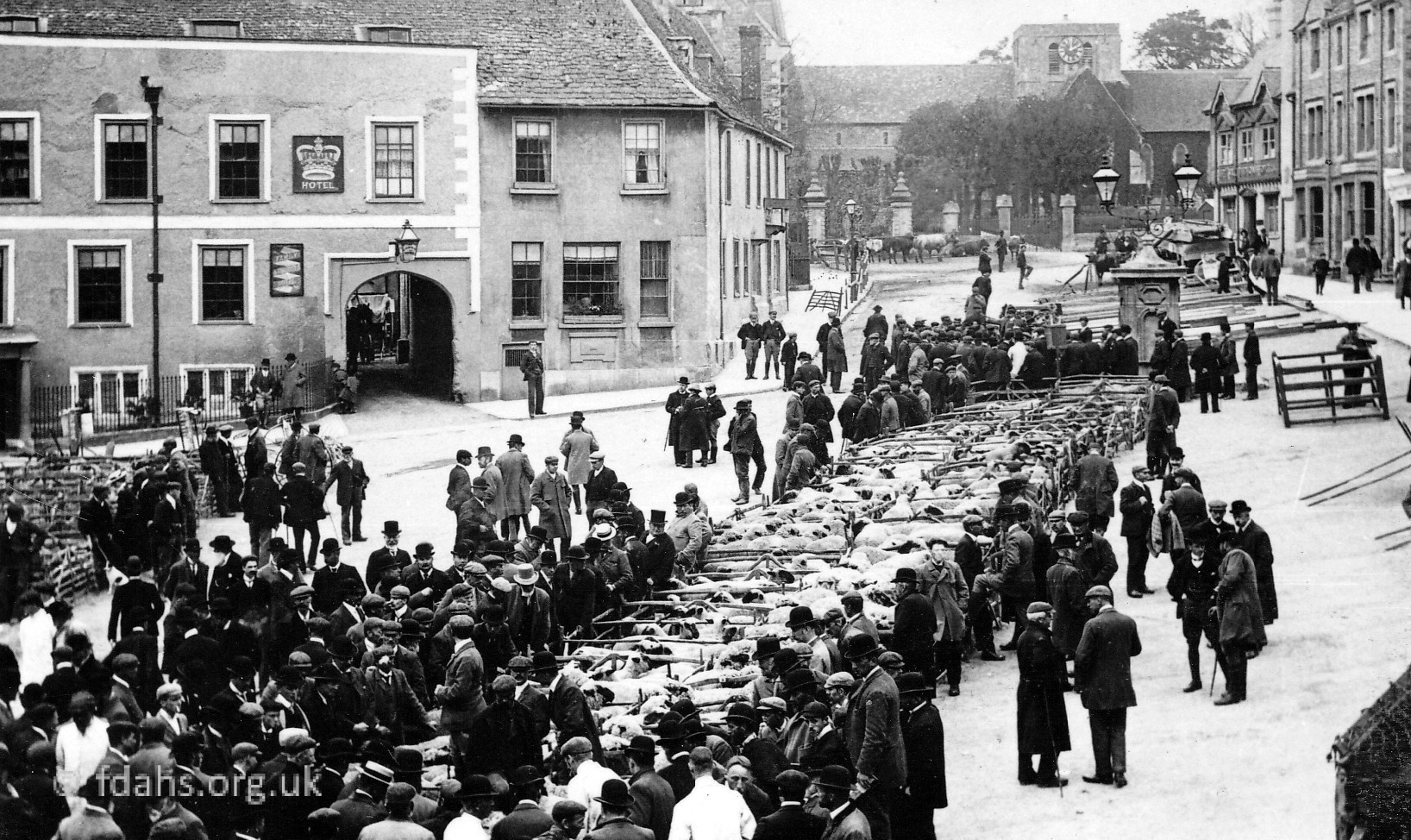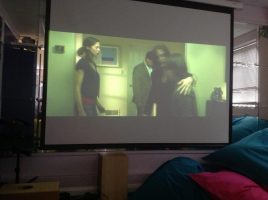The following text was copied from an article in the Faringdon and the Vale Venture, Issue 16, September 23rd 1972. It provides an interesting history of youth going way back but fails to mention the implications of the rise of ‘The Teenager’ in the 1950s and particularly the 60s when such young adults drifted away from being copies of their parents. They started earning money in part-time jobs and spent such gains on their own kind of music, clothes and forms of entertainment. It states that the Youth Centre, here in the 1970s was open to ages 14-20; but I certainly had lost interest in such a thing, and the like, by the age of 14 in the ‘Swinging 60s. But then that was in West London not here in leafy Faringdon. The age range is more likely to be around 10-15 today.
History of Youth Movements in the 1800s
ONE HUNDRED AND FIFTY (now 200) years ago there were no youth movements or clubs as we know them today. The reason was quite simple – children just did not have the time to belong to them. In Britain children in towns worked 12, 14, even 16 hours a day, while in the country children worked as long as the adult farm labourers, and children of the rich folk had toys, nannies and schooling and consequently did not need to become involved in organised group activities.
 In the course of the 19th century dramatic changes occurred which together led to the time when children and young people had time to themselves. The reduction in working hours, then the cessation of children working, and the introduction of compulsory elementary education, were the results of the great efforts made by social reforms to remedy some of the evils of our society. Thomas Hughes of Uffington was closely connected with the work of the Christian Socialists who also included Charles Kingsley, of “Water Babies” fame, amongst these ranks. People such as these and Charles Dickens used the medium of the ‘novel’ and the ‘children’s story’ to comment accurately on the social conditions of the time.
In the course of the 19th century dramatic changes occurred which together led to the time when children and young people had time to themselves. The reduction in working hours, then the cessation of children working, and the introduction of compulsory elementary education, were the results of the great efforts made by social reforms to remedy some of the evils of our society. Thomas Hughes of Uffington was closely connected with the work of the Christian Socialists who also included Charles Kingsley, of “Water Babies” fame, amongst these ranks. People such as these and Charles Dickens used the medium of the ‘novel’ and the ‘children’s story’ to comment accurately on the social conditions of the time.
 Thankfully the scene changed and children by the turn of the century had time to play. The country child was more fortunate than the town child who had little or no space in which to play, to explore, to develop. There was a danger that many of these children with their parents at work might get into bad company, become bored and inactive, become frustrated and aggressive. An answer came from those who thought that young people should be organised into groups, so that they could follow activities usually not available to children on their own. Youth movements which resulted from this way of thinking, i.e. to keep young people “on the right lines” were began by well intentioned people who gave their time voluntarily and unpaid.
Thankfully the scene changed and children by the turn of the century had time to play. The country child was more fortunate than the town child who had little or no space in which to play, to explore, to develop. There was a danger that many of these children with their parents at work might get into bad company, become bored and inactive, become frustrated and aggressive. An answer came from those who thought that young people should be organised into groups, so that they could follow activities usually not available to children on their own. Youth movements which resulted from this way of thinking, i.e. to keep young people “on the right lines” were began by well intentioned people who gave their time voluntarily and unpaid.
Early movements of this nature were the Young Men’s Christian Association founded in 1844, to be followed by the Y.W.C.A. in 1855. The Boys Brigade followed in 1883, although these organisations initially confined their activities to such outwardly obvious religious activities as ‘prayer meetings’, ‘bible study meetings’ etc. , they developed their activities to include athletics , first aid, brass band playing, and so on. The era of ‘muscular Christianity’ was upon us and the virtues, obedience, punctuality, cleanliness, tidiness and fitness, received particular attention.
The Boy Scouts movement came about as a result of Lord Baden Powell’s desire to increase outdoor activity for young people, and the movement caught on so much that from its beginning in 1907/08, the membership has grown to be over 10,000,000 throughout the world. There are several other youth organisations, including Y.H.A., that have been formed on a voluntary basis to provide facilities and encourage and supervise the use of these facilities.
The original spontaneous possibly haphazard, development of Youth Services initiated and supported entirely by voluntary effort, followed a familiar pattern in British institutions. It has now reached the stage where the voluntary organisations, the local education authorities, and the State are in partnership, in an attempt to provide for those between 14-20 ‘leisure time occupation … for those willing and able to profit by the facilities provided for that purpose’.
Faringdon Scouts and Guides
See our Scouts & Guides page.
Faringdon Youth Club in the 1940s-50s
The youth club started in Westbrook House, Gravel Walk then moved to the old school house in Stanford Road (which had closed in 1935) and got up to a whole lot of activities, some of which are shown in the photos below. Russell Spinage, a lovely man, used to be in charge along with his sister Peggy. He was a local builder and also had a funeral undertaker business near the school that used to be in Southampton Street and later he moved to the Old Railway Station.






Faringdon Youth Club in the 1970s
Faringdon has provided a good number of people who have given up their time and energies to further the welfare of Youth. Many voluntary organisations still thrive in the district, providing valuable services for their members, and their continued activity and progress is a highly desirable thing.
Over the last few years, in addition to the voluntary services referred to above, a Youth Club organised under the auspice of the Youth Service, has become very active in Faringdon. Under the leadership of Mr. A. K. Anthony, this club, from its inception at the Modern School in Southampton Street, and subsequently centred at Tollington Secondary School (now Faringdon Community College), has provided a significant contribution to youth activities in the district, offering a wide choice of leisure time pursuits. Mr. Anthony. after 17 years devoted to the Youth Service, retired from official youth work to return to full-time teaching in 1971, and he was succeeded by Mr. Roger Potts, as teacher/warder. The Faringdon Youth Centre is open to all young people of the district between 14-21, regardless of where they attended school.
The facilities that can be enjoyed by members include Billiards; Snooker; Table Tennis; Badminton; Crafts; Weight-Lifting; Canoeing; Sailing; Netball; Gymnastics: 5-a-side Football; Hiking: Camping; Volley Ball; Archery; Tennis; Basketball; Car Rallies; Visits and Discotheques. Some of these facilities are offered by the Area Youth Service and involve a considerable amount of travelling to other clubs or venues for activities that cannot be offered at Faringdon, e.g. Sailing. Involvement in these activities would be greater, it is believed, if better transport facilities were available or offered.
FAZE Youth and Community Centre 2010-2018
 In 2010, the Youth Centre moved away from Faringdon Community College in Fernham Road and took over the building opposite the lay-by in Highworth Road. The building and grounds belonged to Oxfordshire County Council Highways Department for their gritters, salt, tarmac, and lorries but had not been used by them for many years. The centre had been the dream of youth workers of the time. The Cromwell Centre, as it was first called was officially opened by Lord Faringdon in July 2010. It later changed its name to Faze Youth and Community Centre. The £200,000 Oxfordshire County Council project was part-funded by developer contributions secured by the council from housing developments in the town. The following photos were extracted for posterity from their Facebook page, which was very well used until July 2014 when all activity on it suddenly stopped.
In 2010, the Youth Centre moved away from Faringdon Community College in Fernham Road and took over the building opposite the lay-by in Highworth Road. The building and grounds belonged to Oxfordshire County Council Highways Department for their gritters, salt, tarmac, and lorries but had not been used by them for many years. The centre had been the dream of youth workers of the time. The Cromwell Centre, as it was first called was officially opened by Lord Faringdon in July 2010. It later changed its name to Faze Youth and Community Centre. The £200,000 Oxfordshire County Council project was part-funded by developer contributions secured by the council from housing developments in the town. The following photos were extracted for posterity from their Facebook page, which was very well used until July 2014 when all activity on it suddenly stopped.
The new centre boasted some fantastic new facilities including games, big screens, a wii, an x-box, a pool, arts and crafts evenings, music clubs, health sessions and youth workers on hand if you want to talk. There was a group focussed on those with additional needs, known as “AAA“ (Access All Areas) and there were sessions for all girls, all boys, young carers, younger children (spanning the transition from primary to secondary education) and generic sessions for teenagers up to 19yrs. There were several employed youth workers and the centre was always buzzing!
At that time, youth services in Faringdon were the responsibility of Oxfordshire County Council. When OCC later centralised their youth services, it became necessary to establish another source of funding, if the youth centre was to continue to operate. A private company was set up in August 2011 by eight local people to run the centre and various grants and generous donations were received, which preserved the service. Over time a relationship was established with Faringdon Town Council, who took responsibility for the salaries of the staff.
2015. The running company was dissolved in July 2015 and the council took over full operational responsibility. Then tragedy happened. The local paper reported that the FAZE youth centre building was temporarily closed in November 2015 due to problems in the roof. It said that rats had chewed through several electric cables and made the building unsafe. It was meant to reopen after Christmas but the damage was too severe. The council had to relocate the service permanently to the Pump House and the Corn Exchange.
2018. The service was reduced over time until eventually all funding was suddenly cut in January 2018. This left no youth service and devastated members and staff.
FAAAZE 2018
A group of volunteers and parents of the Access All Areas group within FAZE decided to save the AAA group and established an unincorporated charitable association focussed entirely on those members with additional needs. They chose to name it FAAAZE, to reflect the history of the original group, inserting AAA into FAZE. It opened in May 2018 and still runs today. It is staffed by volunteers and operates with the continued support of Fitzwaryn School, Faringdon and District Rotary Club and several other generous benefactors. The club is for anyone with a disability between the ages of 11 and 25 years. Their aim is to provide a safe social environment for young people to encourage the development of their independence, social and life skills through weekly sessions and occasional age specific special events. Every week they have games and activities, social events, entertainment and a small affordable tuck shop selling snacks and drinks.
Faringdon Youth Challenge Oxfordshire 2018
A new Faringdon youth group was set up as part of the Youth Challenge Oxfordshire (YoCO) initiative. It is a local charity established to support young people aged 14 – 21 in youth groups following a guided 15-18 month programme designed to help them to overcome the problems that they face during teenage years by developing resilience and confidence. It is run by youth group leaders at weekly meetings with a professional team in support. The programme includes: Educational sessions on topics such as ‘Drugs and Alcohol Abuse’ and ‘Healthy Relationships’; CV writing and interview skills; Team work and leadership skills; Healthy eating and cookery sessions; Fundraising projects and events; Community outreach (e.g litter picks); Trip to Youlbury Camp (after 6 months); Basic Swahili lessons (ready for…); Life-changing volunteering trip to Western Kenya with The Nasio Trust.
References:
1. The Herald – https://www.heraldseries.co.uk/news/8319653.old-county-council-highway-depot-at-faringdon-becomes-new-youth-centre/
2. Companies House – https://beta.companieshouse.gov.uk/company/07729344/filing-history
3. FAZE Youth and Community Centre – https://www.facebook.com/faringdonyouthcentre
4. Debra Warner, former joint director, Faze Youth and Community Centre.
5. FAAAZE – https://www.faaaze.org/
6. Youth Challenge Oxfordshire – https://www.yoco.online/
7. Faringdon and the Vale Venture, Issue 16, September 23rd 1972.






